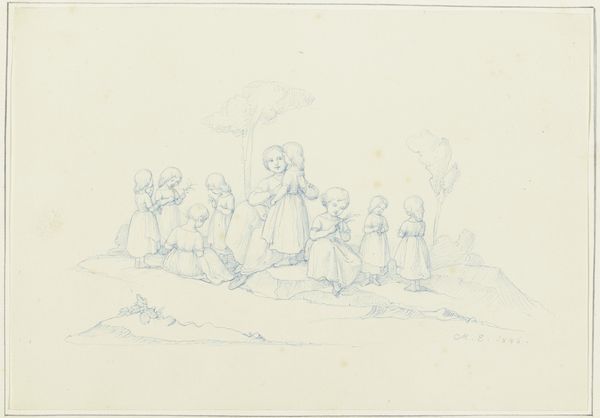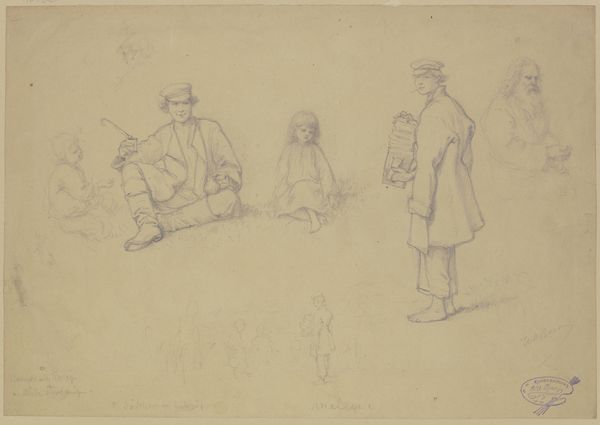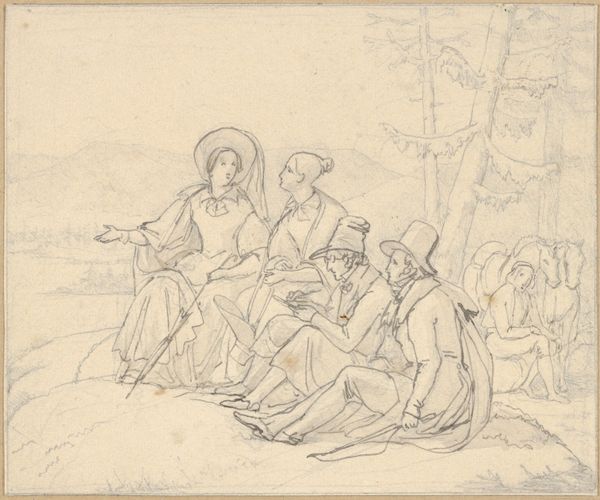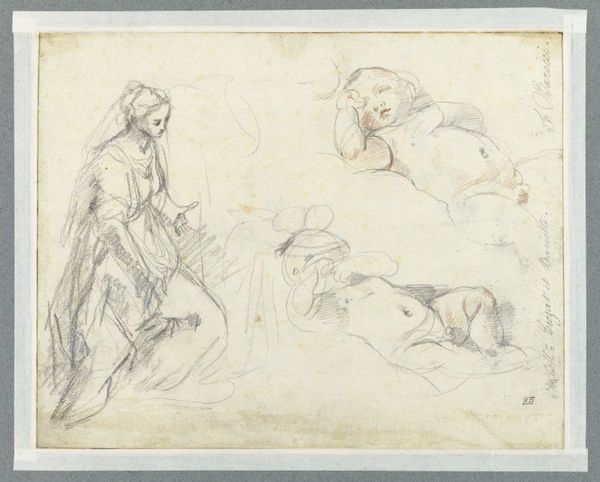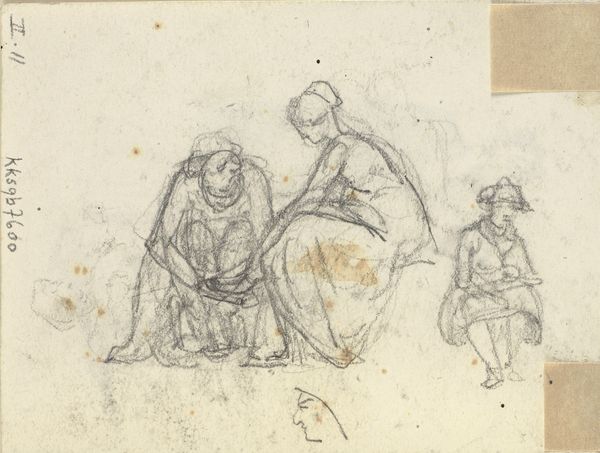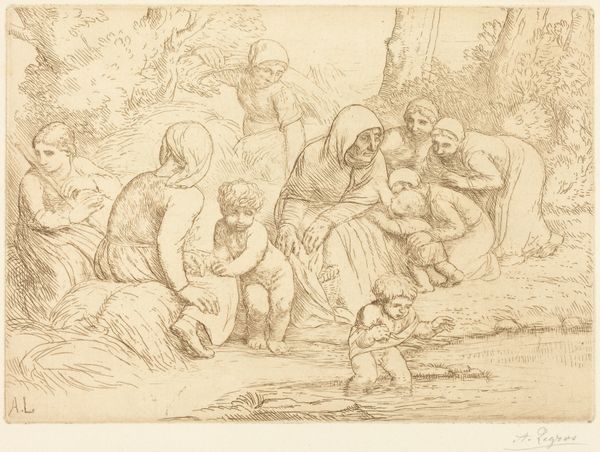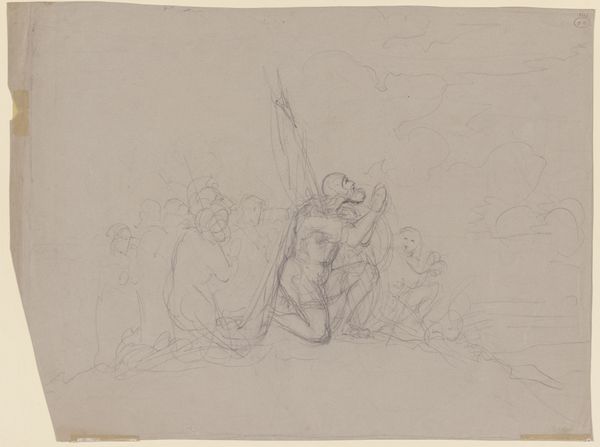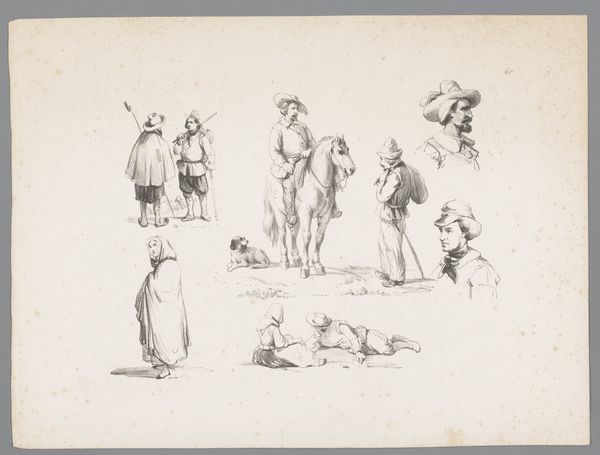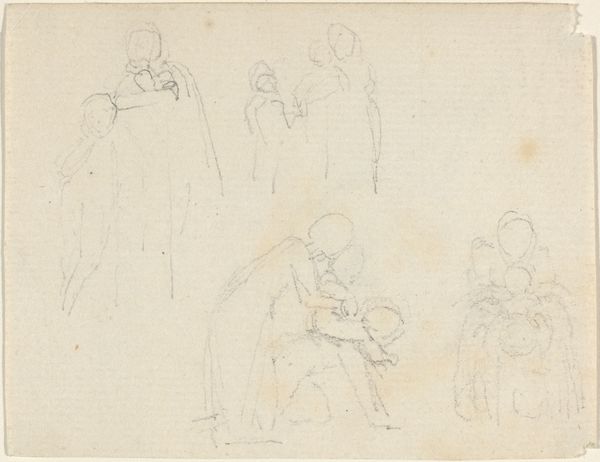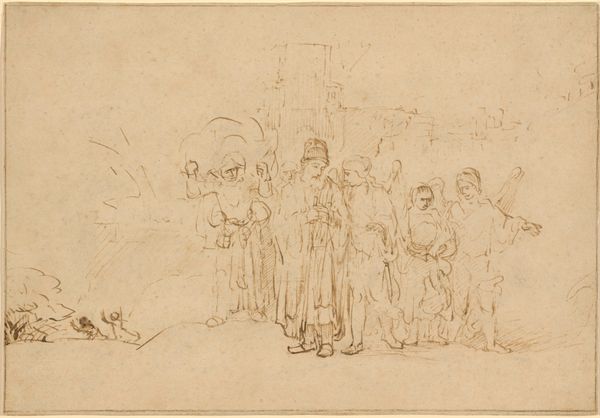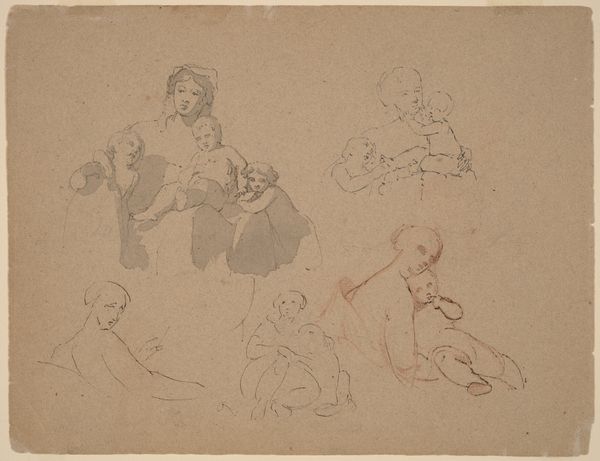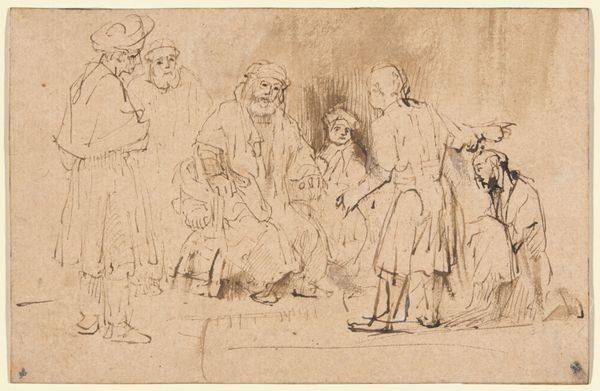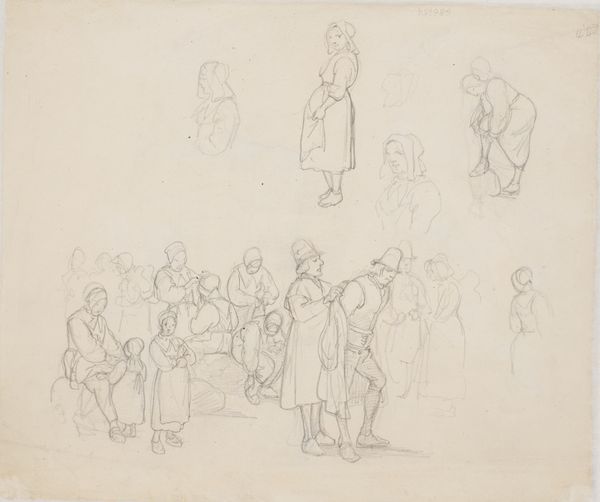
drawing, gouache, ink, pencil
#
portrait
#
drawing
#
gouache
#
figuration
#
ink
#
group-portraits
#
romanticism
#
pencil
Copyright: Public Domain
Editor: So, here we have Wilhelm Amandus Beer's "Twelve Children Anticipating", a drawing rendered in ink, pencil and gouache held in the Städel Museum. The children seem so delicately drawn. There’s almost a wistful, dreamlike quality to it. What strikes you about this work? Curator: I think what stands out to me is how this seemingly innocent image taps into the socio-political undercurrents of its time. Group portraits, especially of children, weren't simply sentimental depictions. They reflected societal values, particularly the rising importance of childhood within the burgeoning middle class and the developing idea of universal education in the 19th century. Who *were* these children? And why were they represented like this? It raises a lot of questions. Editor: That's interesting. It challenges my initial read of it as purely sentimental. Does the title – "Twelve Children Anticipating" – give you any specific thoughts about that context? Curator: Absolutely! "Anticipation" implies a future, a hope. Perhaps it speaks to the optimistic view of the future, investing in the next generation. Remember Romanticism wasn’t only about fantasy, it was also about an evolving concept of human potential – often presented in academic institutions, with the support of public funding. Where in society were these paintings commonly displayed? Were these children painted from life, and why select a random collection of 12? Editor: So, thinking about it as an appeal for supporting these children. Who might have seen the picture? Curator: That’s the critical historical analysis. Was it intended for private viewing or as a statement towards public engagement, or possibly some public funding or philanthropy towards this orphanage? What were the institutional networks and incentives at play here? How were children portrayed, both literally and metaphorically in this Romantic depiction, in relationship to society's well-being? Editor: Wow, I never would have thought of this drawing carrying so many layers of meaning beyond its initial impression. I definitely see it in a new light. Thanks! Curator: It shows us that what we think is visually evident in fact hinges on deeper currents, requiring us to continuously seek different modes of seeing.
Comments
No comments
Be the first to comment and join the conversation on the ultimate creative platform.
